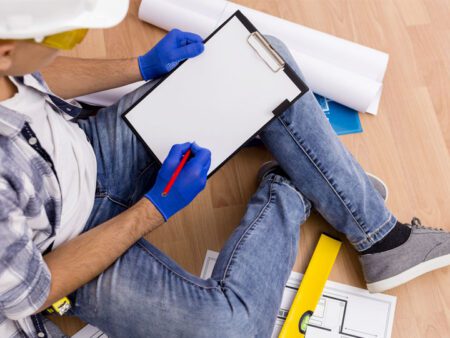 As a homeowner, having basic repair skills can save you time, money, and stress. While hiring professionals for complex tasks is sometimes necessary, knowing how to handle basic home repairs can empower you to tackle small issues on your own. In this beginner’s guide, we’ll explore 10 tips and techniques for common home repairs, equipping you with the knowledge and confidence to maintain and fix various aspects of your home.
As a homeowner, having basic repair skills can save you time, money, and stress. While hiring professionals for complex tasks is sometimes necessary, knowing how to handle basic home repairs can empower you to tackle small issues on your own. In this beginner’s guide, we’ll explore 10 tips and techniques for common home repairs, equipping you with the knowledge and confidence to maintain and fix various aspects of your home.
- Unclogging a Drain: A clogged drain can be a nuisance, but it’s something you can often fix yourself. If water isn’t flowing smoothly, your first tool of choice should be a plunger. Place it over the drain and give it a few firm pumps. If this doesn’t work, you can escalate to a plumber’s snake or a hand auger, which can reach deeper into the pipe to dislodge the blockage. Alternatively, a more natural solution involves household items. Pour a half cup of baking soda into the drain, followed by a half cup of vinegar. The chemical reaction can often break down the clog. Wait 15-20 minutes, and then rinse with hot water.
- Resetting a Circuit Breaker: When your power goes out in part of your house, it’s likely due to a tripped circuit breaker. Your electrical panel is usually located in a basement or garage. Open it up and look for the switch that isn’t aligned with the others – this is the tripped breaker. Flip it back to its original position to restore power. Remember, frequent tripping might indicate a larger electrical issue, so consult with a professional if it continues.
- Stopping a Running Toilet: A running toilet can waste gallons of water, increasing your utility bill. The problem usually lies with the tank’s float or fill valve. Try adjusting these components first. If the problem persists, you might need to replace the flapper. This is a simple and inexpensive fix that involves removing the old flapper and attaching a new one in its place.
- Cleaning Gutters: Gutters filled with leaves and other debris can cause water to overflow, leading to potential water damage to your home. To clean them, use a sturdy ladder to reach the gutters and remove the debris with a trowel or garden spade. Once the debris is removed, rinse the gutters with a hose to ensure water flows freely. Always prioritize safety when using a ladder.
- Changing a Furnace Filter: A dirty furnace filter can reduce the efficiency of your heating system and degrade air quality in your home. To change it, locate the filter slot on your furnace, remove the old filter, and replace it with a new one. Make sure the arrow on the filter points toward the furnace – this indicates the direction of airflow.
- Operating a Fire Extinguisher: Knowing how to use a fire extinguisher can be lifesaving. In case of a fire, remember the acronym PASS: Pull the pin, Aim at the base of the fire, Squeeze the handle, and Sweep from side to side. It’s a good idea to keep fire extinguishers in high-risk areas like the kitchen and garage.
- Fixing a Leaky Faucet: A leaky faucet is not just annoying; it also wastes water. This problem can usually be fixed by replacing the washer. First, turn off the water supply to prevent flooding. Then, remove the handle of the faucet and the packing nut. This will reveal the stem; remove that as well, and you’ll find the washer. Replace it, then reassemble the faucet.
- Sealing Windows and Doors: Gaps in windows and doors can let in drafts, making your heating and cooling systems work harder. To seal these gaps, you can use weatherstripping or caulk. For larger gaps, you might need to use an expandable foam. This can help save on energy costs and keep your home more comfortable in both summer and winter.
- Testing a Smoke Detector: Smoke detectors are essential for home safety. Most detectors have a test button that you can press to ensure they’re working. If the alarm doesn’t sound, replace the batteries and test again. If it still doesn’t work, the detector itself may be faulty, and you’ll need to replace it.
- Fixing a Screen Door: If your screen door isn’t closing properly, it may be that the pneumatic closer needs adjusting. You can adjust the closing speed by turning the screw on the closer. If the screen is damaged, most hardware stores sell replacement kits that include new screen material and a tool to install it.
At first, these tasks may appear overwhelming, especially if you need to gain experience in home maintenance. However, with a bit of practice, you’ll become more comfortable doing them. Always prioritize safety, and don’t hesitate to call a professional if you’re unsure about something. Home maintenance is a learning process, and there’s no shame in seeking help when you need it.
Picture Credit: Freepik



